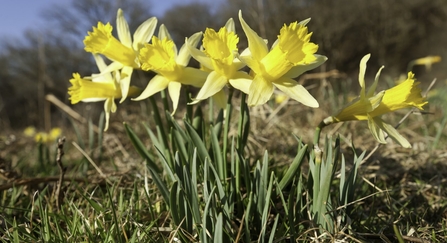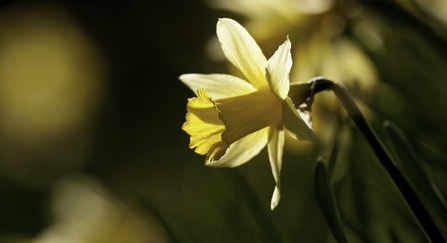I like signs that tell me how the year is progressing. The dawn chorus on volume 11, return of the swallows and daffodils. These cheery trumpets are favoured by gardeners and parks departments alike as a herald of spring. In common with many urban streets, Shrewsbury’s Sundorne Road has a concourse of daffs that guide me on my commute like runway landing lights.
For years I’ve used their flowers as my way of telling how early spring is. “The daffs are in flower for Dydd Dewi Sant” I proclaim if they are open on March 1st (come on, it’s St David’s Day). To me, that’s a welcome sign spring has arrived early.



